With the continuous decline in cost and price, LCD TV is gradually replacing the traditional CRT as the mainstream product in the home market due to its display effect and thin and light volume. In 2007, global LCD TV shipments reached 86 million units, compared with 2006. Growth of 58%. According to market research firm iSuppli, global LCD TV shipments will exceed 100 million units in 2008 and reach 170 million units by 2011. In addition to price factors, existing cable TV networks range from analog signals to digital signals. The conversion will also greatly stimulate the sales of LCD TVs.
This article refers to the address: http://
LCD TV power module design challenges
Compared with the traditional CRT of the same size, the medium and large size LCD TVs are significantly higher in power consumption and cost than the former. Therefore, in order to replace CRT as a mainstream product, LCD TV must reasonably reduce power consumption and manufacturing cost, because energy saving has become the theme of the times, and as a consumer electronic product, price will always be the main factor for users to consider.
From a power consumption perspective, ENERGY STAR (EPA V3.0) has clearly regulated the maximum power consumption of TV products, which will take effect on November 1, 2008. The maximum power consumption allowed by TV products in the EPA V3.0 specification
The size of the inch corresponds to (Table 2), where the maximum power consumption of the 32-inch LCD TV is less than 120W, and the power consumption of LCD TV products currently on the market is generally higher than the upper limit of the new standard. In order to pass the ENERGY STAR certification, design engineers have only two choices: fundamental changes to the existing power system design ideas, reducing power loss during power conversion; or reducing backlight brightness and reducing the output power of the audio system to reduce The power consumption of a small LCD TV. Obviously the latter is at the expense of the user's visual and auditory experience. The former is the best choice. This is a major challenge for power supply design engineers, namely how to reduce the power consumption of the LCD TV without reducing the audio-visual effect.

Table 1: ENERGY STAR V3.0 defines the maximum power consumption of HDTVs.
From a cost perspective, according to the latest forecast report from market research firm DisplaySearch, the overall manufacturing cost of LCD TV will gradually decline from 10% to 16% in the next three years, and the cost reduction of large-size products above 42 inches may even be More than 20%. Power modules (including backlight power) account for a significant portion of the cost of the entire machine, so engineers need to simplify the design of power modules to help reduce costs.

Table 2: Calculate the maximum allowable power consumption of LCD TVs of each size according to the ENERGY STAR V3.0 standard.
In order to solve the above problems, Angbao Electronics used its own power industry experience and system research and development capabilities to optimize the traditional LCD TV power supply architecture, and integrated the self-developed PFC, QR, Flyback, Inverter and other product line control chips, successfully developed. The overall power solution for large LCD TVs saves about 10% in energy consumption and significantly reduces the cost of manufacturing power modules.
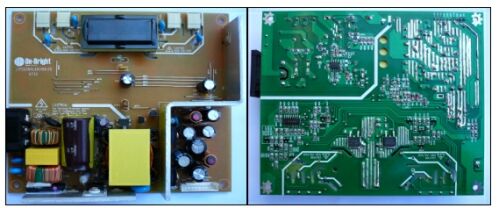
Figure 1: Ang Po Electronics' 62W LIPS power supply for LCD products up to 23 inches.
LCD TV traditional program analysis and existing problems
Due to the variety of loads, LCD TV power supply design has become relatively complex, requiring such as AC power factor correction, isolated power conversion, non-isolated point-of-load power conversion, and a variety of power monitoring and protection functions, LCD TV products Increasingly relying on technological innovations in the field of power management to establish their competitiveness in the market.
Small-size LCD TVs of 23 inches or less are usually less than 75W, and do not need to be equipped with PFC lines. The design and manufacture of power supply modules is relatively mature. Early discrete AC/DC main power boards and DC/AC inverter power supplies The board has been integrated into a PCB board for the purpose of reducing manufacturing costs, that is, the current mainstream LIPS (LCD Integrated Power System) structure. Angbao Electronics has developed a variety of LIPS power supplies, AC/DC partial conversion circuits for such applications. Mainly use OB2263, OB2269 and OB2202 chips, DC / AC part of the inverter circuit mainly uses OB3316, OB3318 and OB494P chips, small size LCD TV inside only power board and signal processing board two PCB, and for 32 inches or more For LCD TVs, the interior is relatively complex.
Figure 2 shows a traditional 32-inch LCD TV, which mainly includes three PCB boards, namely: signal processing board for audio and video processing and system control functions; AC/DC power board, 220V@50 Hz of commercial power Or 110V@60 Hz AC input is converted into DC voltage of 24V/18V/12V/5V/3.3V required by audio system, video system, control system, etc., and realizes power factor correction and safety isolation from input grid; DC /AC power board, used to re-invert the 24V or 12V DC voltage output from the AC/DC power board to obtain an AC voltage of 1000V@50Hz, and drive the backlight CCFL lamp with high-voltage high-frequency sinusoidal AC voltage. Backlight brightness adjustment and other functions.
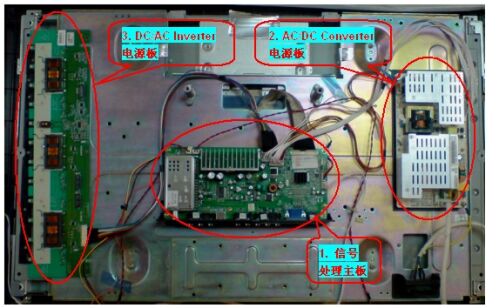
Figure 2: Traditional LCD TV built-in signal processing, AC/DC power supply, DC/AC power supply three PCB boards.
FIG. 3 is a structural block diagram of a conventional LCD TV power supply, which can be generally divided into three modules according to functions, namely, a PFC module, a DC/DC main power module, and a DC/AC inverter power module.
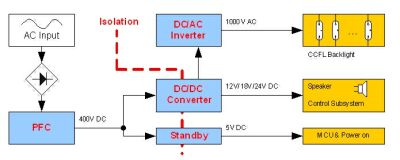
Figure 3: Block diagram of a traditional LCD TV power system.
Since off-line switching power supplies inevitably generate non-sinusoidal input currents with high harmonic content, this will cause some pollution to the power grid and affect other electronic equipment connected to the same power line, in order to meet the requirements of the European Union IEC61000-3-2. Class D standards or similar regional harmonic content specifications typically require the addition of a PFC module to a switching power supply design with an input power greater than 75W. The input power of the large-size LCD TV is much larger than 75W, so the PFC module is also an indispensable part of the LCD TV power supply. The PFC module converts the AC voltage input from the grid into a stable 400V DC voltage through the Boost line to supply the DC/DC power supply. use.

Figure 4: Traditional LCD TV main power range and architecture selection.
The DC/DC main power module is responsible for converting the 400V DC voltage output by the PFC into the low voltage DC level required by various loads to meet the working needs of DC/AC inverter power input, audio system, video system, control system and other modules. Common voltages include 24V/18V/12V/5V/3.3V. The International Energy Agency (IEA) and the European Union's "1W" plan require that the standby power consumption of all products be reduced to less than 1W in 2010. In order to comply with the 1W standby power specification, DC/DC main power modules usually need to be designed. A separate standby power supply that maintains the operation of the remote receiver module in standby mode and turns off the PFC and DC/DC main power modules to minimize standby power consumption.
According to the size and power of the LCD TV, the common topologies of the DC/DC main power supply include: flyback (including quasi-resonant), double-tube flyback, double-tube forward, and resonant half-bridge (HB LLC). For a power range of 50W to 100W, a single-switch flyback or quasi-resonant flyback topology is the best choice. Quasi-resonant control improves conversion efficiency and improves EMI interference caused by switching by reducing switching losses. For the more powerful 100W ~ 200W range, you can deal with the two-switch flyback. The forward structure can be applied to the power range of 200W to 300W, but it is a challenge to solve the EMI problem caused by the hard switch due to the need to operate in the continuous conduction mode. The resonant half-bridge configuration is suitable for power applications above 150W. This architecture offers significant performance advantages in high power LCD TV applications. Zero-voltage switching (ZVS) and low-current shutdown control over the full load range help minimize switching Loss and reduce EMI interference.

Figure 5: Block diagram of the Angbao electronic LCD TV power solution.
The DC/AC inverter power supply is used to drive the backlight module, which converts the 24V or 12V DC voltage outputted by the DC/DC main power supply into a high voltage AC voltage of about 1000V for driving the backlight CCFL lamp and achieving backlight brightness (lamp current) The adjustment function of the LCD TV display screen depends on the high-brightness backlight to support, so the output power of the DC/AC inverter power supply part usually accounts for more than 70% of the total output power of the whole machine, and the larger the size, the backlight power The greater the proportion of consumption.
Through the above structural analysis of the traditional LCD TV power supply, it is not difficult to find a problem that the overall efficiency is very low, because the backlight part of the power consumption, which accounts for more than 70% of the power consumption, undergoes a two-stage conversion of the buck and the boost after the PFC. And the loss of efficiency during the conversion process also causes heat dissipation problems. LCD TV's ultra-book design and noise limitations make it impossible to add a fan to the chassis, and the accumulation of heat directly leads to uneven temperature in the upper and lower parts of the case, plus the sensitivity of the CCFL brightness to temperature, such a design is presented to the user. What comes out will be the "unique" effect of uneven brightness on the top and bottom of the panel.
In order to solve the above problems, the industry has been exploring the 400V high-voltage input inverter power supply scheme. Angbao Electronics has turned this concept into reality by integrating its own rich product line, that is, DC/AC inverter power input is no longer DC/DC main
The 24V voltage of the power supply is taken directly from the 400V output of the PFC. In this way, the power of the backlight portion can reduce the first-level energy conversion, thereby saving the first-class efficiency loss, and the design power of the DC/DC main power source can be greatly reduced, and the heat dissipation problem of the DC/DC main power source is solved, and the most important one is DC/ The manufacturing cost of the DC main power supply is greatly reduced. Without the high-voltage input DC/AC inverter power supply scheme, people often reduce the power consumption of the whole machine by optimizing the AC/DC main power supply, such as optimizing the LCD TV power supply through the half-bridge resonant LLC architecture, but with Corresponding to the expensive manufacturing costs, the LCD TV integrated power solution developed by Angbao Electronics can meet the power requirements of backlights in large-size LCD TVs with inexpensive single-switch flyback or quasi-resonant flyback.

Table 3: DisplaySearch's recent data statistics and future trend forecasts for LCD TV costs.
Compared with the traditional LCD TV power solution, the company's solution has advantages in efficiency and cost, and with comprehensive product coverage in the field of power management, all ICs on the LCD TV power board can be provided by Angbao Electronics, including PFC. Control chip, Flyback/QR control chip, Standby switch, Inverter control chip, etc. This provides considerable convenience for the procurement and channel management of LCD TV power supply manufacturers, and the rapid response of technical support is also guaranteed, and the resulting reduction in R&D and operating costs cannot be ignored.
Figure 6 takes the 150W LCD TV power supply as an example to compare the traditional solution with the Angbao electronic solution. It assumes that the backlight consumes 100W at full load and the other part consumes 50W at full load. According to the conventional architecture and the conversion efficiency of each module, the traditional scheme is used to design. The input power will reach 197W, and the overall efficiency is 76%. With the design of Angbao Electronics, the theoretical input power only needs about 174W, and the overall efficiency is as high as 86%.
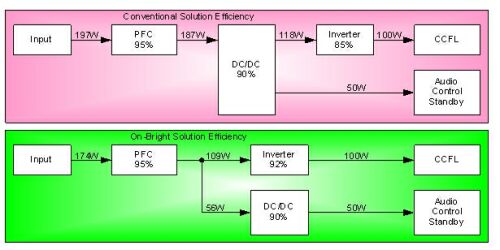
Figure 6: Power comparison between the traditional solution of the 150W LCD TV power system and the Angbao Electronics solution.
On the other hand, the traditional solution requires the design of a 168W DC/DC main power supply. With the design of Angbao Electronics, it is only necessary to design a 50W DC/DC main power supply, and there is no need to use an expensive half-bridge resonant LLC scheme.
Angbao electronic LCD TV overall power solution
The overall power solution developed by Angbao Electronics for LCD TVs below 300W is mainly composed of the following four parts: PFC module, using OB6563 control chip. DC/DC main power module, using OB2202 control chip, QR flyback structure. Standby power module, using OB2358 switch, flyback structure. DC/AC inverter power module, using OB3316 control chip, 400V high voltage input half bridge structure. The system block diagram is shown in Figure 7.
In the traditional LCD TV power supply, since different modules use different fields of power management technology, the control chips of each module often need to be purchased from different suppliers, which makes the LCD TV power supply design with very high requirements become relatively complicated. The R&D cost and R&D cycle have been correspondingly improved and extended, and the main control ICs of each module of the LCD TV power supply integrated solution developed by Angbo Electronics use their own self-developed green energy-saving chips. As the company's power management technology in different fields has the ability to integrate resources, the design of the original complex LCD TV power module is simplified, and the technical support that LCD TV manufacturers value is fully guaranteed, so LCD TV products can be better. Relying on the advantages of low power consumption, low cost and short cycle brought by the innovation of power modules, it quickly established its core competitiveness in the market. In addition, since the DC/AC inverter power supply of the solution adopts 400V high-voltage input technology, the overall power density, the number of parts and the PCB size can be reduced, so that the two independent power boards (AC/DC main power supply and DC) will be independent. The integration of the /AC inverter power supply into a single piece (LIPS power supply) creates conditions that further reduce manufacturing costs and simplify the manufacturing process for LCD TV power supplies up to 37 inches.
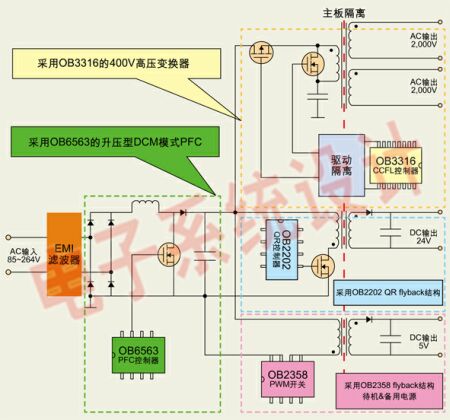
Figure 7: Block diagram of the overall solution for the Angbao electronic LCD TV power supply.
LCD TVs above 37 inches generally need to place two inverter power boards with opposite phases on the left and right sides of the panel. This is mainly due to two considerations: First, due to the extension of the length of the lamp and leakage current, high voltage The difference in brightness between the end and the low-voltage break tends to be obvious, and the brightness of the left and right sides needs to be balanced by the bilateral high voltage. Secondly, the current withstand voltage of the transformer is not enough to provide a lighting voltage higher than 4000V to illuminate the large-sized panel. Long tube, need to
The bilateral drive method solves the withstand voltage problem faced by the transformer in the one-side drive mode. For this type of application, Angbao Electronics improved the LIPS structure by separately placing the transformer part of the DC/AC inverter power supply on the left and right sides of the panel to achieve bilateral anti-phase high-voltage driving of a single lamp, and power conversion. And the control part remains on the original LIPS board.
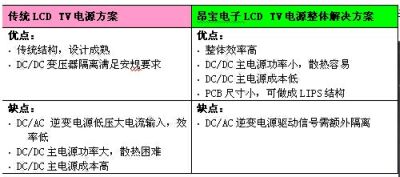
Table 4: Comparison of the advantages and disadvantages of the traditional LCD TV power solution and the Angbao electronic solution.
Comparison of power consumption and main materials of traditional solutions and Angbao's electronic solutions
Compared with a well-known brand 32" and 46" LCD TV, the overall power solution of LCD TV developed by Angbao Electronics has obvious advantages over traditional power solutions in terms of overall power consumption and key parts:
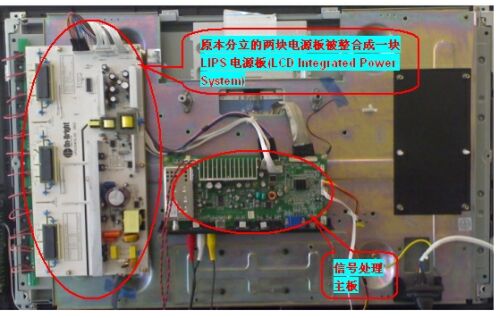
Figure 8: 32" LCD TV LIPS power board developed by Anbao Electronics.
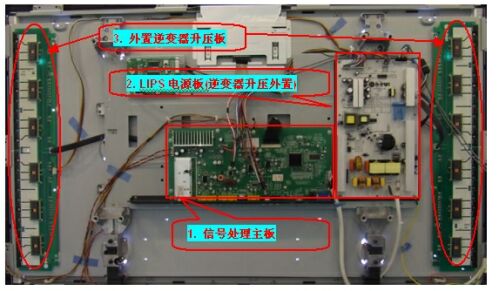
Figure 9: 46" LCD TV LIPS power board + external raw pressure board developed by Anbao Electronics.
From the actual test data of Table 5 and Figure 10, under the same output condition, the input power of the solution of Angbao Electronics is significantly reduced compared with the conventional scheme, and the larger the size, the more obvious the difference.

Table 5: Comparison of power consumption between traditional LCD TV power solutions and Ambo electronic solutions.
From the comparison of Table 6, the difference of the parts of the two schemes is very obvious in the DC/DC main power part. With the scheme of Angbao Electronics, the design power of the DC/DC main power part is only the traditional scheme. One of them is even smaller, which greatly reduces the manufacturing cost of the whole machine power supply.
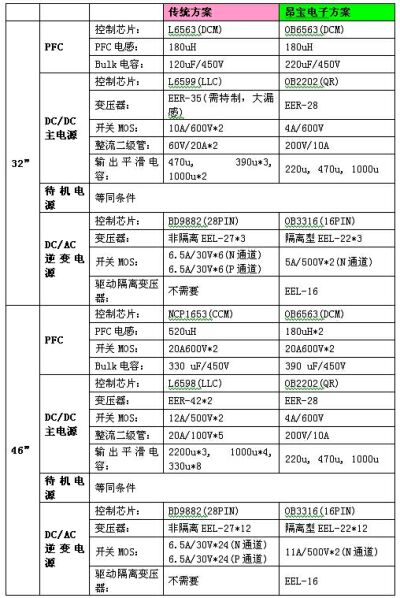
Table 6: Comparison of the main components of the traditional LCD TV power solution with the Angbao electronic power solution.
Summary of this article
With the advent of the high-definition era, it has become an inevitable trend that LCD TVs will replace CRTs as mainstream TVs for home TVs. As shipments increase year by year, the energy consumption and cost pressures faced by LCD TVs cannot be avoided. A situation, Angbao
Electronics has fully utilized its own familiarity with power management technologies in different fields, integrated related products of PFC, AC/DC, DC/AC product lines, and successfully developed high-performance, low-cost LCD TV power supply solutions. To create conditions for solving the problems of this era.
Traditional LCD TV power supply is divided into two PCB boards by AC/DC main power supply and DC/AC inverter power supply, which are provided by different suppliers. AC/DC main power supply manufacturers are not familiar with DC/AC inverter power supply field and technology, DC /AC inverter power supply manufacturers are also unfamiliar with the AC/DC main power supply field and technology. Their respective production equipments are not currently compatible with these two types of power supply products. To solve this problem, power supply solutions and power supply manufacturing are required. Business, LCD TV manufacturers, etc.
The downstream enterprises cooperated to re-adjust the industrial structure and optimize resource allocation. It is believed that in the near future, this LCD TV power supply overall solution will completely replace the traditional power supply to help LCD TV products reduce manufacturing costs and power consumption.
ZGAR Vape Device 5.0
ZGAR electronic cigarette uses high-tech R&D, food grade disposable pod device and high-quality raw material. All package designs are Original IP. Our designer team is from Hong Kong. We have very high requirements for product quality, flavors taste and packaging design. The E-liquid is imported, materials are food grade, and assembly plant is medical-grade dust-free workshops.
From production to packaging, the whole system of tracking, efficient and orderly process, achieving daily efficient output. We pay attention to the details of each process control. The first class dust-free production workshop has passed the GMP food and drug production standard certification, ensuring quality and safety. We choose the products with a traceability system, which can not only effectively track and trace all kinds of data, but also ensure good product quality.
We offer best price, high quality Vape Device, E-Cigarette Vape Pen, Disposable Device Vape,Vape Pen Atomizer, Electronic cigarette to all over the world.
Much Better Vaping Experience!

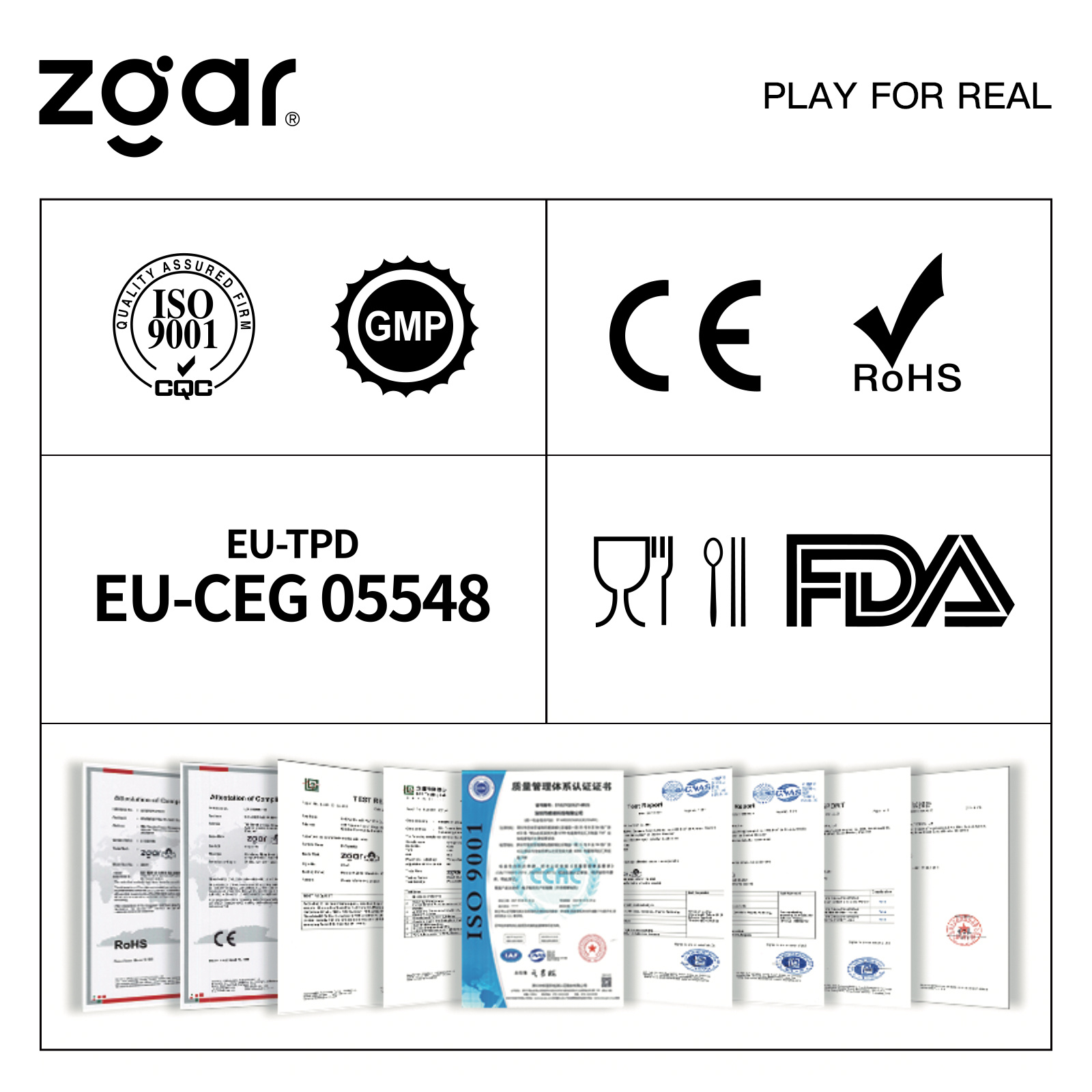
ZGAR 5.0 E-Cigarette Vape Pen,ZGAR 5.0 Device Vape,ZGAR Vape Device 5.0 Vape Pen Atomizer,ZGAR Vape Device 5.0 Disposable E-Cigarette OEM vape pen,ZGAR Device 5.0 electronic cigarette
Zgar International (M) SDN BHD , https://www.szvape-pen.com